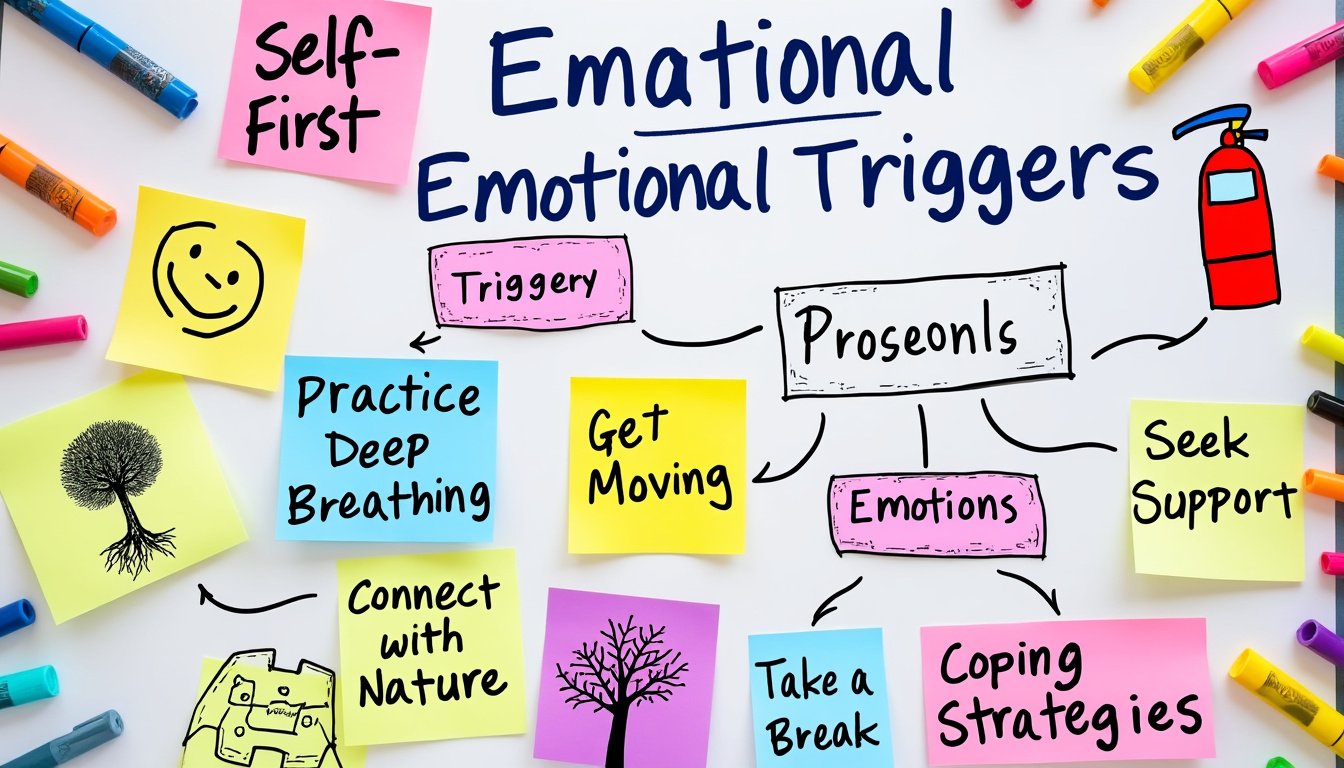THE emotional triggers represent stimuli capable of provoking intense emotional reactions. They can result from past events, current situations or even simple words spoken by others. Knowing how to identify and manage these triggers is crucial to taking a proactive approach to our emotional well-being. Having control over our emotional reactions not only improves our quality of life, but also allows us to build healthier relationships.
Understanding how these triggers work is a first step towards effective management of emotions. This text looks at the different steps to identify and manage these triggers on a daily basis, integrating practical techniques and solutions based on experience.
What are emotional triggers?
Emotional triggers are factors that cause emotional reactions varied, whether joy, sadness, anxiety or anger. Each person may have unique triggers stemming from personal experience and interactions with their environment. Some triggers may manifest in subtle ways, such as a song that recalls a pleasant memory, while others may be very visible, such as an argument that results in major agitation.
It’s important to pay attention to these triggers because they often blend into our automatic reactions and can lead to behaviors beyond our control. Triggers can cause impulsive reactions, sometimes disastrous, if we are not aware of what causes them.

Physical reactions to triggers
Emotional triggers can also manifest as physical reactions. For example, you might experience an increased heart rate, sweating, or muscle tension. These signals are important clues that help you understand what is going on inside you when you face certain situations. Being aware of your physical reactions is a powerful tool for identifying your emotional triggers.
An effective method is to practice exercises mindfulness, allowing you to take note of your sensations in the present moment. This includes methods like deep breathing or the body scan where you examine every part of your body.
How to identify your emotional triggers
Identify your personal emotional triggers by following specific steps. A widely recognized method is based on holding a emotional diary. Write down your thoughts and reactions to upsetting events to detect patterns. Ask yourself questions like: “What happened?”, “What emotions did I feel?”, and “How did I react?”. These responses can often point you toward recurring triggers and situations that affect your well-being.
THE return requests from loved ones can also provide valuable perspectives. Discuss your reactions with friends or family members and ask them if they noticed any patterns. They may have an overview that you incidentally don’t have. A reflection about your past experiences is also fundamental. Sometimes a traumatic event can activate disproportionate emotions in the face of seemingly mundane situations.

Trigger Management Techniques
Once your triggers are identified, the next step is to develop strategies to manage them. Awareness is the first strategy. When faced with a trigger, acknowledge your emotion without judgment. Next, take a deep breath to help calm your initial reaction.
Adopt stress management techniques like meditation or yoga can also be extremely helpful. These techniques allow you to reduce anxiety and increase your emotional balance. This may also include techniques of muscle relaxation.
The effects of emotional triggers
Emotional triggers, when left unmanaged, can have significant consequences on your mental health. THE emotional reactions, when misunderstood, can lead to avoidance behaviors or feelings of isolation.
It’s often difficult to form healthy relationships if recurring triggers are harming your mental health. Understanding these effects is essential to adapt your approach. By becoming aware of the triggers, you can gradually reduce their impact on your daily life and regain a balanced life.

Impacts on physical health
The effects of emotional triggers are not just psychological. They can also influence your physical health. For example, chronic stress caused by unidentified triggers can lead to problems with sleep, digestive disorders and chronic pain. Take your physical health seriously because it is closely linked to your emotional well-being.
By learning to manage your triggers, you not only improve your mental health, but also your physical state.
Coping Mechanisms for Emotional Triggers
THE coping mechanisms play a crucial role in managing emotional triggers. They can be healthy or unhealthy, depending on how they are applied. To begin, it is important to identify your own coping mechanisms and see if they are beneficial for you. Practicing self-care is one of the most valuable coping mechanisms. Make sure you have time for yourself, include activities that you enjoy and that bring you comfort.
You can also develop a strong support system. The presence of friends, family, or support groups can provide invaluable comfort when faced with triggers. Open communication and empathy play a vital role in this process.

Practice mindfulness
The techniques of mindfulness are also effective in managing emotional triggers. They include meditation, conscious breathing and progressive relaxation. By becoming more aware of your emotions, you develop a better ability to respond to these triggers without overreactivity.
For example, practicing meditation for a few minutes each day can help you shift your thoughts to a more calm and centered state, reducing the impact of emotional triggers.
Creating a Personal Plan to Manage Triggers
Have a personalized plan to deal with emotional triggers is crucial. Start by writing down your identified triggers in a notebook. Note specific situations that provoke emotional reactions. Then, strategize for each trigger. What management techniques can you apply? What support mechanisms can you mobilize?
It’s also helpful to establish short- and long-term goals for your emotional management. A short-term goal might be to recognize your daily triggers, while a long-term goal might be to achieve a level of increased calmness.

Note taking and adjustment
Evaluate your progress regularly by taking notes on your experiences. What worked? Which strategies did not have the desired effect? Being flexible in your approach is essential; adjust your plans as you learn more about your triggers and emotions.
Remember that managing emotional triggers is an ongoing process, and each step you take toward self-awareness is a victory in itself. It is completely okay to ask for help if you feel you need it. Don’t put too much pressure on yourself, every progress counts.


